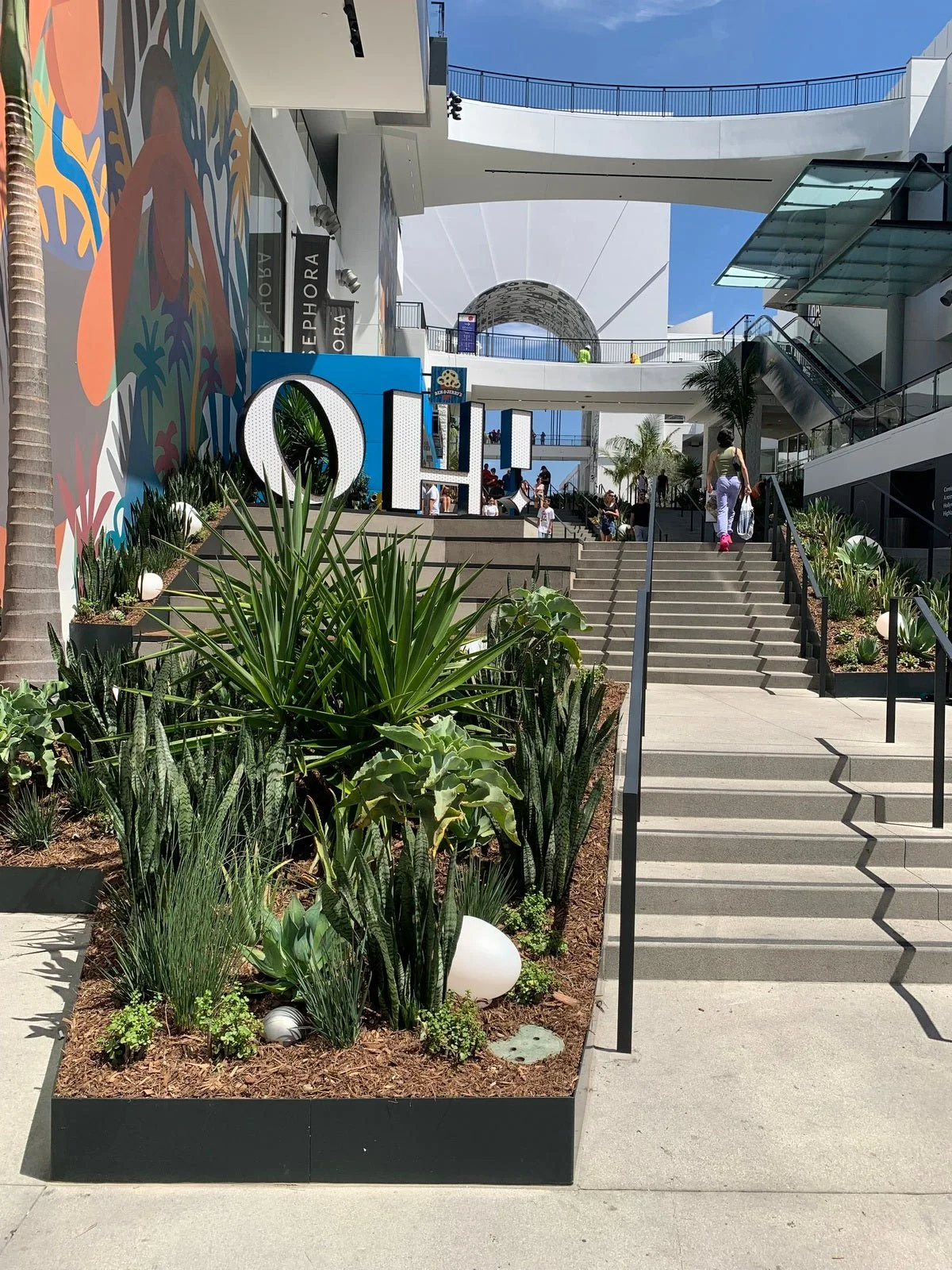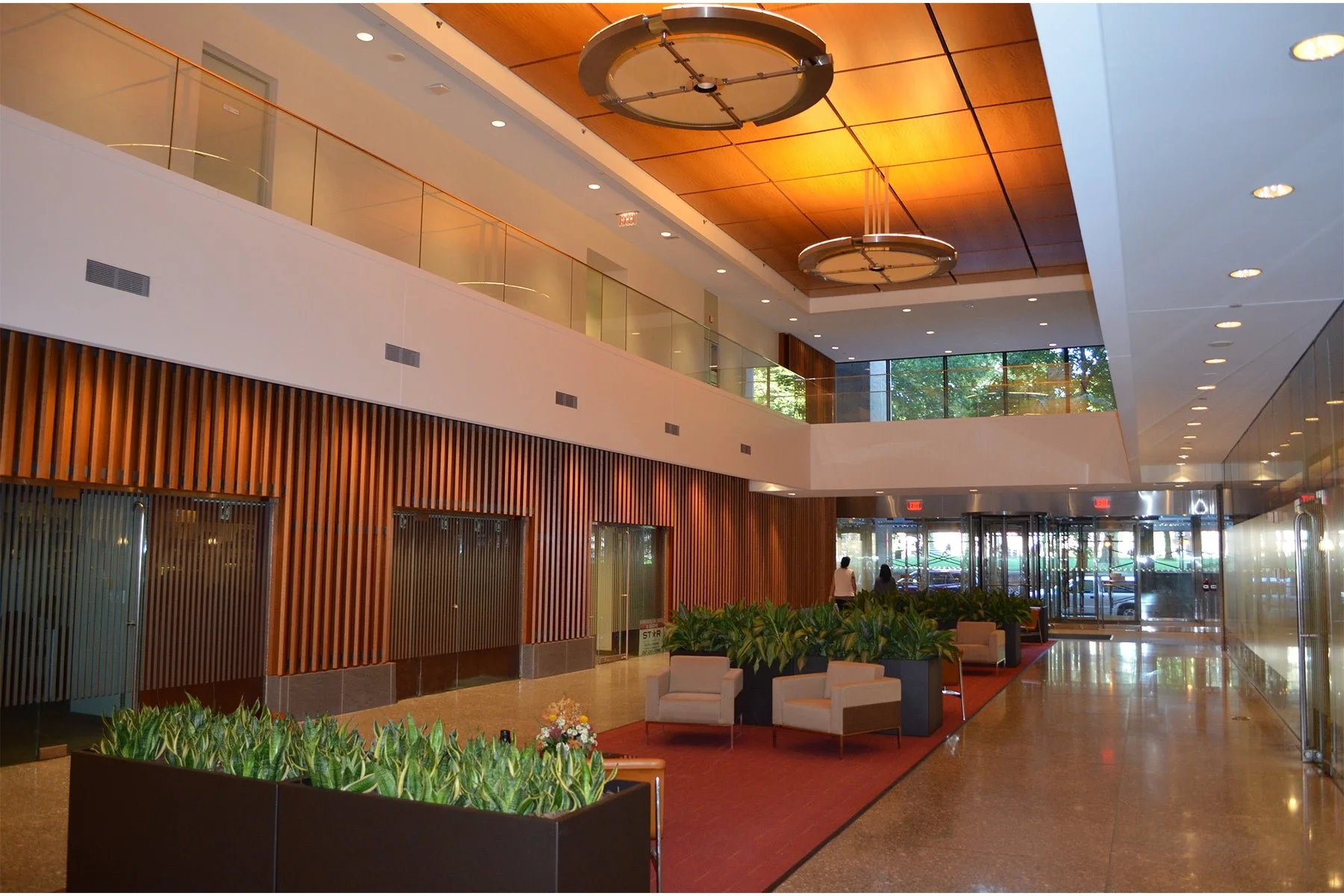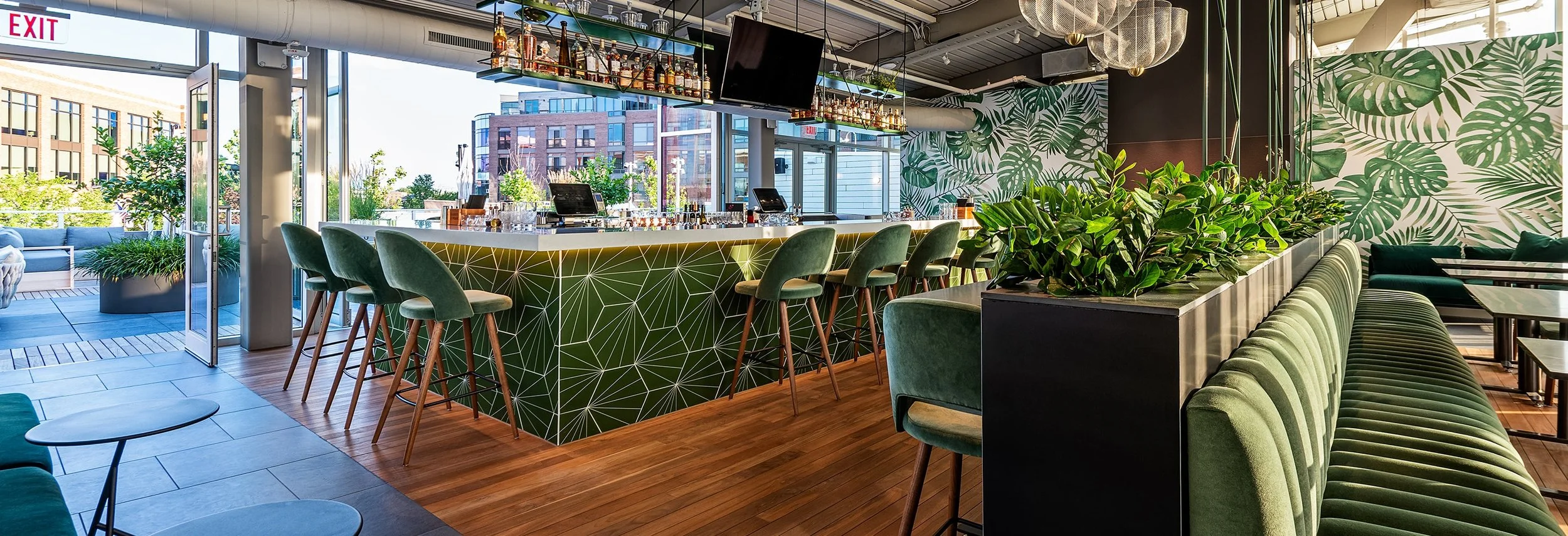Why add Plants? Part 1: Emotional and Mental Health Benefits of Plants
Plants are powerful. They elevate our spirits, act as a salve for mental and emotional deficits, boost productivity and self-esteem, and much more.
When consumers really understand the well-being benefits associated with people-plant interactions, they begin to realize plants are a necessity — rather than a luxury or a decorative after-thought.
Wondering what proves that Plants Are a Necessary Element for all spaces?
Dr. Charlie Hall and Melinda Knuth, both at Texas A&M University, have compiled hundreds of peer-reviewed studies and PureModern has pulled some of the big ideas from that compilation and other pieces of research for you.
Why?
So you can better understand and share important information about the power of plants with your clients.
PureModern Custom Planters at Alexan ALX Luxury Apartments
The Cold Hard Facts
It’s one thing to know that plants are important and that taking a hike in the mountains has many significant positive effects on your well-being. But getting your clients to adjust their mindsets or increase the budget is challenging without real proof of the benefits.
Luckily, there is a plethora of proof to support what we know to be true about the importance of plants in design plans. Research proves a variety of benefits, including:
Positive changes in pulse, heart rate, and the stress hormone cortisol
Improvements in attention and memory tests
Better brain wave response measured using an EEG headset
Increased brain activity measured using functional magnetic resonance imaging (fMRI)
So there is, in fact, cold, hard data that supports your value proposition when advising your clients to incorporate plants into their budget so they can reap the benefits in their newly redesigned spaces. And there is proof that those benefits include a return on investment.
In the first installation of a four-part series, keep reading to learn more about the positive impact plants have on stress, anxiety, depression, memory retention, intellect, creativity, and quality of life.
PureModern Extra Large Tapered Square Planters at DoubleTree by Hilton in Orlando, FL
Benefit #1: Reduce Anxiety and Stress
Time spent in natural settings can trigger many positive results, including:
Accelerated recovery from mental fatigue
Improved concentration
But you probably knew that to some degree already.
Now for the really interesting part: these “natural settings” don’t necessarily need to be in a forest or even in suburbia. Just by incorporating plants, it’s possible to create a natural setting just about anywhere — in exterior or interior settings.
Simply having greenery in view triggers stress reduction and mental restoration.
This greenery can be a plant in a corner of a waiting room, several plants positioned along a hallway or vestibule, a large planter to break up a large open floor plan of an office, or even a break room. The study noted benefits even with the smallest green additions — a simple poster of a plant or a live plant in a small pot made a difference.
For landscape designers and their clients, this is game-changing news. Take a look at these practical applications:
Impact on urban populations. Research from urban areas in Scotland and the UK proves that individuals living in urban areas with more green space have lower levels of both mental distress and the stress hormone cortisol. Other studies prove people living near more green space show higher indicators of well-being than those who live without any surrounding greenery.
Impact on the elderly. Green spaces encourage people to spend time outside, which gets them moving. Research proves that being outside has a positive effect on muscle mass, dexterity, agility, and levels of depression.
Impact on workers. Interior plants lead to healthier and more productive workplaces. The presence of plants enhances attention capacity, lowers stress levels, and elevates job satisfaction.
Impact on academia. Studies from the University of Illinois show marked improvements in attention and stress recovery when young people, particularly students, are exposed to greenery during school.
Impact on shoppers. Studies show that when people can connect with natural settings, they report lower levels of stress and higher levels of eye-tracking and attraction, plus they are more emotionally involved. This finding confirms other results that suggest shoppers are becoming bored with traditionally-designed malls and prefer “lifestyle centers” with a greener and more progressive experience.
Your retail clients will love to hear this: A study published in the Journal of Forestry found that the average shopper spends 9-12% more — on both goods and services — when surrounded by high-quality greenery.
PureModern Custom Edging at Ovation Hollywood Los Angeles, CA
Benefit #2: Maximize Focus and Attention
Studies show that more and more people are struggling with focus and attention. But natural elements help ease distractions. In fact, working memory and cognitive function improved, and feelings of restoration materialized when study participants simply viewed scenes of nature.
Add even more value to your next design project by helping your clients see that workplaces with views of nature and daylight are proven to improve productivity and attention with their employees.
Case Study:
One company was so inspired that they installed more windows to provide views of nature for the employees. That company saw a return on investment in just four months! The study performed by The Heschong-Mahone Group found that workers in the company’s call center processed calls 6 to 12% faster once they had greenery in view.
New windows aren’t necessary, however. Large planters can accomplish the same outcome.
Educating your clients about the proven effects of plant exposure can create real change for their bottom line, including:
Fewer sick days
Lower levels of allergens and drowsiness
Higher levels of concentration
Increased productivity and creativity
Elevated mood
Improved employee perception of workplace cleanliness, friendliness, and comfort
It’s no surprise that the studies showed that 97% of employees would like to see more plants in the workplace.
PureModern Planters in a lobby designed by Feigus Office Furniture
Benefit #3: Promote happiness and wellness
Research published in The Journal of Environmental Psychology proves plants and access to planted areas at the workplace trigger higher levels of happiness in employees, which generates more successful outcomes at work.
We found a multitude of studies, and each of them reported double-digit percentage increases in the productivity of happy employees.
Plants are one of the most cost-efficient ways to boost happiness and wellness in employees.
People who are exposed to natural settings benefit from:
Decreased levels of the stress hormone cortisol
Increased self-esteem and mood
More positivity and life satisfaction
Chemical changes in the brain that indicate positive emotions of comfort
PureModern Custom Planters at Garden City Bar Shaker Heights OH
Leverage the Power of Plants to Drive Your Business Forward
Businesses want to enhance results. And people want to enhance the quality of their lives. So whether your next design project is commercial or residential, planters are an innovative and economical way to deliver exactly what your clients need.
Innovative designers are helping clients understand that quality of life is a highly compelling value proposition. Use this research to stay ahead of the curve.
For help selecting the right plants and planters for your next project, get in touch with us today. We’re here to help!






